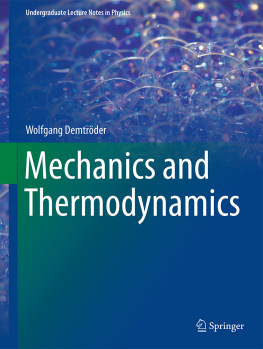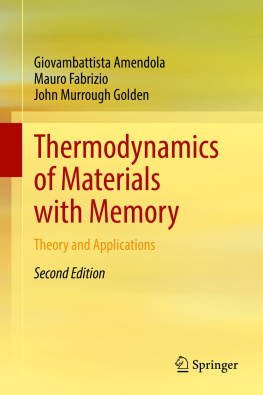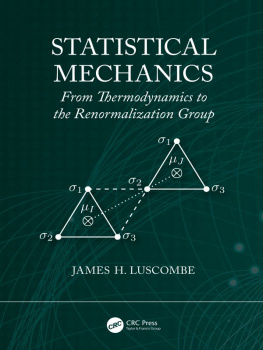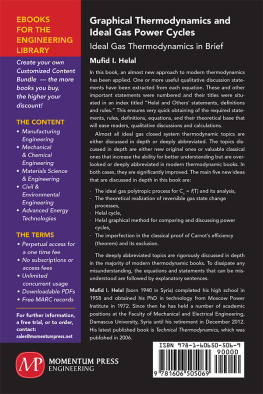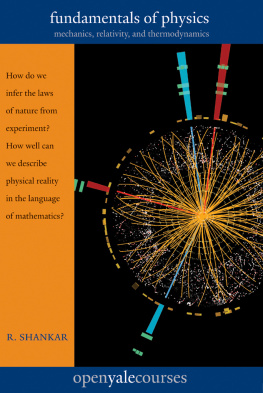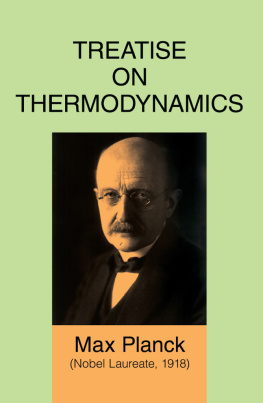Wolfgang Demtröder - Mechanics and Thermodynamics
Here you can read online Wolfgang Demtröder - Mechanics and Thermodynamics full text of the book (entire story) in english for free. Download pdf and epub, get meaning, cover and reviews about this ebook. year: 0, publisher: Springer International Publishing, Cham, genre: Children. Description of the work, (preface) as well as reviews are available. Best literature library LitArk.com created for fans of good reading and offers a wide selection of genres:
Romance novel
Science fiction
Adventure
Detective
Science
History
Home and family
Prose
Art
Politics
Computer
Non-fiction
Religion
Business
Children
Humor
Choose a favorite category and find really read worthwhile books. Enjoy immersion in the world of imagination, feel the emotions of the characters or learn something new for yourself, make an fascinating discovery.
- Book:Mechanics and Thermodynamics
- Author:
- Publisher:Springer International Publishing, Cham
- Genre:
- Year:0
- Rating:5 / 5
- Favourites:Add to favourites
- Your mark:
- 100
- 1
- 2
- 3
- 4
- 5
Mechanics and Thermodynamics: summary, description and annotation
We offer to read an annotation, description, summary or preface (depends on what the author of the book "Mechanics and Thermodynamics" wrote himself). If you haven't found the necessary information about the book — write in the comments, we will try to find it.
Mechanics and Thermodynamics — read online for free the complete book (whole text) full work
Below is the text of the book, divided by pages. System saving the place of the last page read, allows you to conveniently read the book "Mechanics and Thermodynamics" online for free, without having to search again every time where you left off. Put a bookmark, and you can go to the page where you finished reading at any time.
Font size:
Interval:
Bookmark:

 nature, creation, origin) which comprises, according to the definition of Aristotle (384322BC) the theory of the material world in contrast to metaphysics , which deals with the world of ideas, and which is treated in the book by Aristotle after ( Greek: meta ) the discussion of physics.
nature, creation, origin) which comprises, according to the definition of Aristotle (384322BC) the theory of the material world in contrast to metaphysics , which deals with the world of ideas, and which is treated in the book by Aristotle after ( Greek: meta ) the discussion of physics.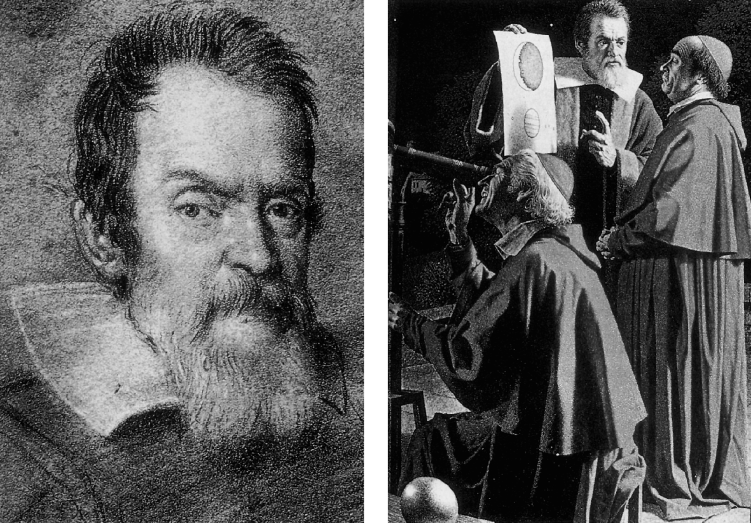
- Based on many careful measurements of planetary orbits by Tycho de Brahe (15461601), Johannes Kepler (15711630) could postulate his three famous laws for the quantitative description of distances and movements of the planets. He did not find the cause for these movements, which was discovered only later by Isaac Newton (16421727) as the gravitational force between the sun and the planets. However, Newtons gravitation law did not only describe the planetary orbits but all movements of bodies in gravitational fields.The problem to unite the gravitational force with the other forces (electromagnetic, weak and strong force) has not yet been solved, but is the subject of intense current research.
- The laws of energy and momentum conservation were only found after the analysis of many experiments in different fields. Now they explain and unify many experimental findings. Such a unified summary of different physical laws and principles to a consistent general description is called a physical theory .
Font size:
Interval:
Bookmark:
Similar books «Mechanics and Thermodynamics»
Look at similar books to Mechanics and Thermodynamics. We have selected literature similar in name and meaning in the hope of providing readers with more options to find new, interesting, not yet read works.
Discussion, reviews of the book Mechanics and Thermodynamics and just readers' own opinions. Leave your comments, write what you think about the work, its meaning or the main characters. Specify what exactly you liked and what you didn't like, and why you think so.

